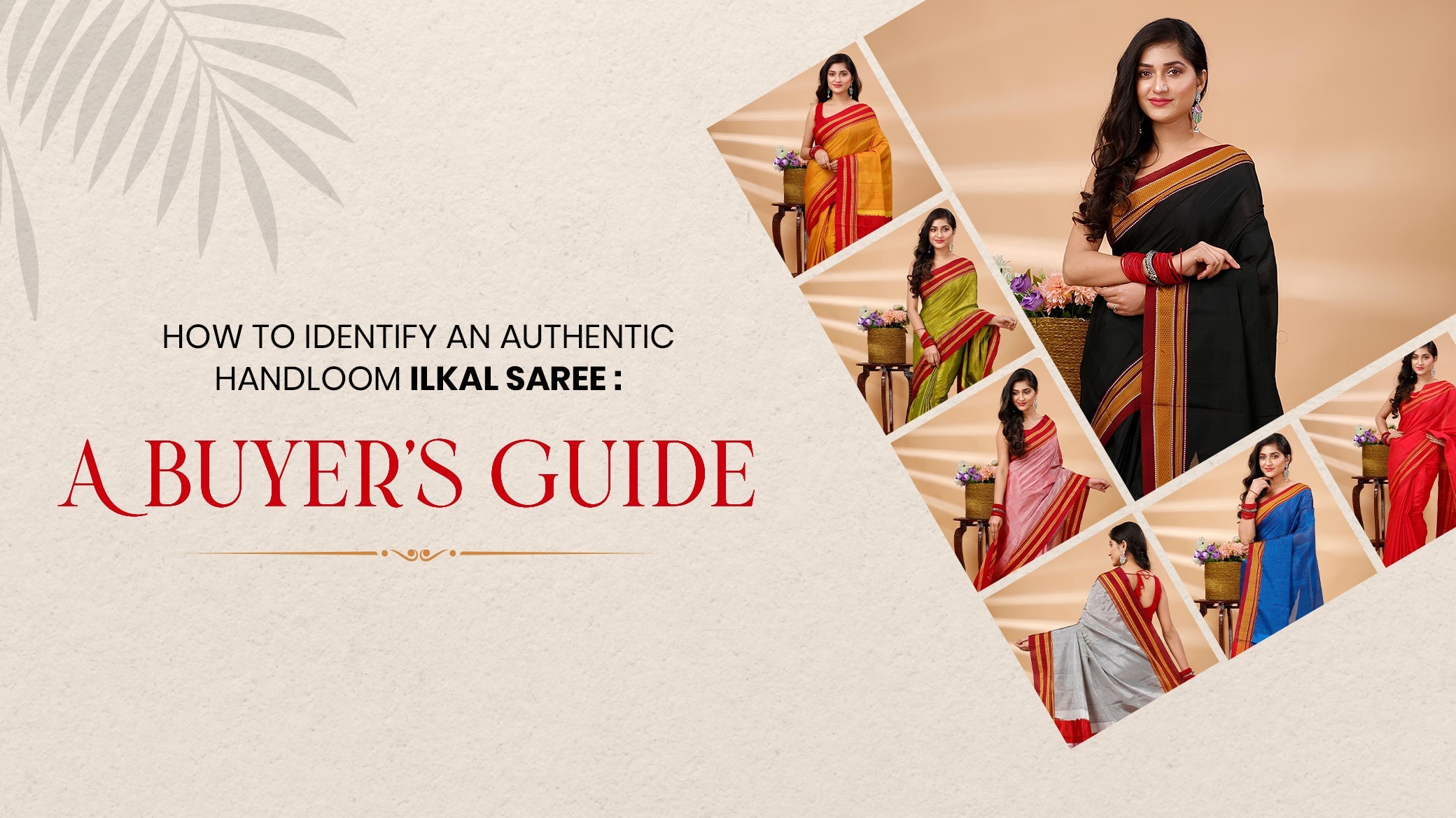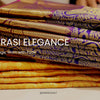How to Identify An Authentic Handloom Ilkal Saree: A Buyer's Guide

Ilkal sarees are the model traditions and skills of the small town of Ilkal, Karnataka, India. Unique weaving techniques have enabled these saris to stay alive through years of history, keeping alive their cultural identity. But with so much variety in the market, how can you believe that you don't buy a fake handloom Ilkal sari? We will help you get through the world of Ilkal saris and give tips on how to determine the genuine from the replica.
1. Getting to know about Ilkal sarees.
Before going into the details of genuine Ilkal saree identification, it is best to know what makes them different. They are woven with cotton or silk threads and are popular for their various borders (also called pallu) and traditional motifs on them. The weaving involves different techniques of artistry with individual saree demanding a lot of skill and accuracy, and the end-product typically bears sturdy texture and lively colors, done using the traditional techniques carried down generations. Not just their visible appearances but with rich cultural meanings, these sarees can be considered beautiful.
2. Key Indicators of Authentic Handloom Ilkal Sarees
When it comes to purchasing a pure hand loom Ilkal saree, the shortlisted points that one should look for include:
A. Certification -Handloom Mark
This is by far among the most reliable ways to know whether the saree is original. You will find the Handloom Mark on the saree. This mark is issued by the government of India while it proves an appointment for this saree to be handwoven. The certification guarantees that the product is from a conventional loom and hence from machines, safeguarding the craft integrity of the handloom sector. Inquire from the reputed seller if the saree carries the Handloom Mark – it is one good assurance.
B. Weave and Texture Inspection
An original Ilkal saree is woven tightly and densely. You would touch and feel spent an expensive material. The particular weaving process which is characteristic of the Ilkal sarees involves two from one and the other - weaving two types of weaving-one for the body of the saree, and the other for the pallu. The best way to differentiate this is by examining it closely, as I have explained, it is a seamless joining from the body to the pallu.
It should be understood as well that a truly handloomed Ilkal saree will have the slight variation, which gives its character of being handwoven. If you consider machine fabrics, they have a perfectly smooth texture and continuous pattern.
C. Design Consistency
Ilkal sarees are best known for their very many attractive geometric patterns which mostly include motifs like peacocks, elephants, and florals. Usually, one can also judge the authenticity of a saree by the consistency and precision of these designs. If you find any irregularity in placement or shape of these motifs, then probably the saree is machine-made or mass-produced. A true handloom saree, however, has an identical pattern all throughout-the-weaving of an experienced weaver.
D. Selvedge (Border) Inspection
Selvedge is the trademark of a pure Ilkal saree, which means the edge of the cloth, leaving no room for disintegration. On such qualities, usually, an Ilkal saree will have a unique border, that has a combination of red and white threads, and will mostly be found in the selvedge hand-woven and not stitched. You may observe a slightly thicker and stronger border compared to the balance of the saree fabric, which carries a design often more sophisticated in this area. A duplicate saree may have a flimsy machine-stitched border, which would not take the authenticity.
E. Price Consideration
Handloom Ilkal sarees are a creation of beauty and this beauty certainly comes at a price. The price may vary, depending upon the intricacy of the design and the material used, but one should suspect the price if it is not just low but absurdly low. Authentic handloom sarees can really not be sold for a price much below the market norm for original pieces, since weaving these sarees takes a lot of effort and time. Be careful; the price is too good to be true.
3. Common Misconceptions and Pitfalls
People often have a few misconceptions about buying an Ilkal saree. Here are a few of them:
Myth 1: Machine-made Saree can be called Handloom
Some of the sellers will claim that their sarees are hand-woven, even though they are machine-made. The dissimilarity usually comes at close examination into weave texture and edges. Rely on your instincts and make a thorough check of the saree before buying.
Myth 2: All Ilkal Sarees Are Same
Ilkal sarees come in varying designs and colors. Some are woven in silk while some in cotton. Further, each weaver has a different choice of patterns and designs. So, an original saree may differ from that which you may have seen online or in another outlet. Hence, to think that all Ilkal sarees are alike, is not correct.
Myth 3: The Pallu is Everything
While usually the focus of attention on the saree is the pallu (or border), it needs to be kept in mind that the total garment is an important element. The body, the weave and the texture of the entire saree contributes to its authenticity.
4. Practical Tips for Buyers
Here are some practical tips you can put into practice for buying an ilkal saree.
Research: Find out about the various Ilkal saree types, design elements that are generally used, etc. Knowing about the fabric, weaving process, and regional differences gives you an edge in shopping.
Buy from Trusted Sources: Invest in your saree from reputed handloom emporiums or certified stores that trade genuine products. Local markets from Karnataka or any authorized handloom cooperative would collect quite a lot for buying authentic Ilkal sarees.
Ask the Seller: The most important that you are to keep in mind, while buying the saree, is the fact that you should always ask about the origin and the weaver from the person certified in this section. A good and reputed seller will be happy and gladdened to give this kind of information.
Try Feel and Touch: An authentic Ilkal saree will feel very strong and heavy in touch. If the fabric is lightweight and flimsy, it is most likely not a handwoven fabric.
Check for Handloom Mark: Always look for Handloom Mark certification on saree.
Conclusion
An authentic handloom Ilkal saree is not simply a piece of cloth that is purchased; it is indeed much more than that: a part of history and craftsmanship. You can recognize a true Ilkal saree by looking at the weave, texture, selvedge, and certification.
Avoid the common myths; most importantly, trust your instincts. With these pointers, you're equipped and ready to make a well-informed and considered purchase regarding one of the most admired out of all traditional Indian clothing.
-
Posted in
authentic, cotton saree, handloom, handwoven, ilkal, indian textile, sarees, silk sarees, sustainability





